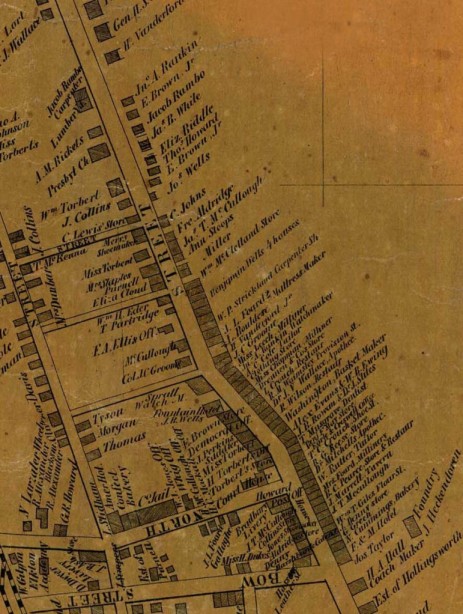 You never know what kind of buried treasures might turn up when someone starts digging around older parts of Elkton. Many parking areas, streets, and buildings lots have yielded relics that were tossed aside and buried long ago. It’s been that way for centuries as people are often astonished after unearthing Revolutionary War and War of 1812 artifacts. Beyond projectiles of war, the soil yields up relics of everyday living including old building foundations, architectural elements, bottles, coins, ceramics, buttons, and arrow-heads. One bona-fide archaeological dig produced Spanish coins, stoneware from prehistoric peoples, and human bones from an aboriginal burial ground.
You never know what kind of buried treasures might turn up when someone starts digging around older parts of Elkton. Many parking areas, streets, and buildings lots have yielded relics that were tossed aside and buried long ago. It’s been that way for centuries as people are often astonished after unearthing Revolutionary War and War of 1812 artifacts. Beyond projectiles of war, the soil yields up relics of everyday living including old building foundations, architectural elements, bottles, coins, ceramics, buttons, and arrow-heads. One bona-fide archaeological dig produced Spanish coins, stoneware from prehistoric peoples, and human bones from an aboriginal burial ground.
These archaeological discoveries put the spotlight on a dimly illuminated part of Cecil County’s history. Since our written record here is strong we know
lots about that extended period, but in earlier times, as the manuscripts grow
weaker, we have to depend on archeology to help puzzle out the past. So whenever a contractor starts digging deep into the earth in the oldest parts of the county seat, one has to wonder what’s being unearthed. Some of
those discarded materials would help us solve historical mysteries since our
soil is crammed with lots of artifacts that have been buried for centuries.
The exposure of some fascinating architectural elements of a building being demolished this past week at 124 and 124 ½ E. Main Street is what brought this subject up. The frame commercial, vernacular structure that stood on the property circa 1880, replaced a much earlier building. Once it was torn
down, some below Main Street elements became visible from Howard
Street. On the west side of the frontage lot was an attractive arched brick structure, which probably supported something heavy such as a multistory fireplace, from an earlier period (see photo). On the east side was another
opening under Main Street.
A few weeks ago, unidentified town officials decided to rush through the governmental bureaucracy a request to tear down the late 19th century commercial structure, bypassing the town’s procedural requirements. As it turned out in this instance, just as it has in other cases, the decision to ignore their own regulations simply made it far more complicated than necessary. After someone in municipal government told the contractor to go ahead, officials had to stop the demoltion so everyone could back up and go through the regulatory steps enumerated by the Elkton ordinances. Once they stepped back to address the required review, the historic district board approved the demolition in a split vote, only requiring that an “attractive fence” be
installed on Main Street as it was unclear what the future held for the parcel.

This is a property that is connected with some of the municipality’s earliest development so one never knows what types of surprising artifacts are waiting to be found and how they will yield insight to the past. Whenever an archaeological study is done around Elkton, the investigators frequently find historical secrets in the ground. The key is there is a lot of stuff we don’t know about that’s buried under Elkton soil. Hopefully officials, in their rush to restore the downtown, will think about archeology as a minimum, though we also suggest they require a basic examination of properties being considered for demolition. Presentation of data concerning a site helps everyone make an informed decision.

This is indeed a fascinating find. What will happen to this arch? Has the demolition of the old structure continued? Will the arch be studied by an archeologist? What was it for? Who built it? When was it built? These are questions that came to my mind as I read your blog. I hope city fathers and mothers are asking them too and will at least try to find answers. We often hear about bringing tourists to downtown Elkton. Exploiting more of the town’s archeological and historic structural uniqueness for tourist dollars might be worth considering instead of covering them up or tearing them down. Just a thought.
Publius, there filled it in with some sort of infill building material so we’re luck we got the photos.